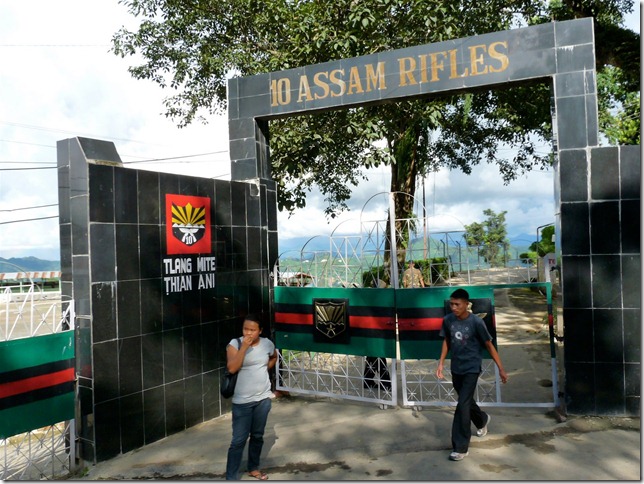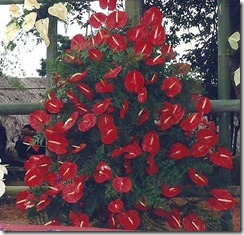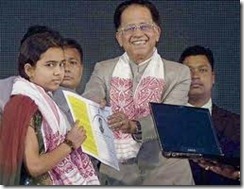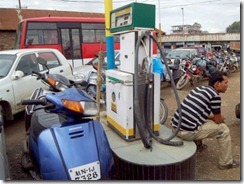By Subir Ghosh

All women victims had suffered a deterioration in their health, lived through starvation, suffered humiliation, physical assault, even rape. But they were concerned about the education of their children and stated that they did not wish the coming generations to undergo the kind of horrific experiences they did. Photo: C-NES / Kausiki Sarma
They had three sons. They were not rich, but “were quite contented”. In the mid-1950s, her husband responded to the Naga movement and joined the Naga army. He rose through the ranks to become an important officer. His wife and children stayed behind in the village to fend for themselves by labouring in their fields. The Indian army kept constant surveillance and often raided the house hoping to capture him. She lived through constant fear and harassment.
After several years in the Naga army, the husband surrendered and came ‘overground’ but found it difficult to live in the village. There was local hostility to him since, while in the Naga army, he had carried out “some harsh measures” on his own village, apparently on the orders of senior officers. He left the village and settled down near the Assam-Nagaland border where he married again. One day, he came back to claim his sons. His first wife was shocked and unable to make him change his mind, despite reminding him of the hardship she had undergone for his sake and that of the family. She walked a long distance pleading with him to change his mind, as he left with the sons — but to no avail.
After that day, she withdrew into herself, stopped meeting people or speaking to anyone. Then some months later she became very loud and noisy. The villagers shut her out and she started living away from the village in a shack. Fearing that she may become a danger to herself, the village sent her to the Wokha district sub-jail where she was kept under the Indian Lunacy Act of 1912 as a noncriminal lunatic. From here, she was later transferred to the Kohima Mental Hospital in 1990. Several months of treatment led to some improvement; her doctor managed to locate two of her sons and brought them to meet her, hoping this might help her recovery. But the bonds had dissipated and they behaved like strangers.
The sons went back home leaving their mother in the mental hospital where she died.
The story of this woman is tell-tale, and has been revealed in a heart-wrenching report ‘Bearing Witness: The Impact of Conflict on Women in Nagaland and Assam’, recently released by the Centre for Northeast Studies and Policy Research (C-NES). The report comes in the backdrop of ongoing peace talks between the Indian government and the Naga insurgents.
The woman here has not been identified, and neither has the village. But as the C-NES study team found: “Most women face a decline in social legitimacy and find themselves relegated to the fringes of society with no one to care for them or to speak on their behalf.”
There was a common hurdle that the researchers came across while talking to women, who have been victims of the Indo-Naga conflict. While victims were willing to recount their painful experiences, a number of them were reluctant to speak on-camera or even be recorded and photographed for the documentary film that was being shot simultaneously. Some of those who spoke, insisted for reasons of security, social standing or just personal wishes, not to be identified by name and, in a few cases, were not willing to have their villages named. The scars remain, as does a deeply-entrenched fear.
It has been 14 years since the National Socialist Council of Nagalim (Isak-Muivah) (NSCN-IM) entered into a ceasefire agreement with the Indian government (with the lesser Khaplang faction following some time later), but fear and trauma among women still endures. As the report remarked: “The stories of these women interviewed, like women elsewhere, need to be told since their contribution to the sustenance of their communities is crucial.”
The C-NES team had to work with an individual-focused model of trauma which did not always fit in with an indigenous tribal and community-based society. In Naga society, even the identity of the victim is strongly rooted in clan and community and is regarded as a collective rather than an individual identity. Trauma resonated, therefore, at the level of the whole village community (even if they were on opposing sides) and this was transmitted across the spectrum because according to them, the entire village had suffered the same way. For this reason, people were reluctant to talk about individual trauma and suffering. This is also a valuable coping mechanism, however, because here everyone carried a collective ‘burden’.
Uppermost in the minds of the women interviewed for this study was what will happen in the future. Everyone wanted an early and peaceful settlement of the Naga political issue so that future generations would get a chance to plan and live their lives different to the violent past and the volatile present. Nearly half of the women interviewed, along with other stakeholder groups, agreed that because of the prolonged and entrenched conflict situation, standards in society had deteriorated.
So, what about the future? A glimmer of hope may be found in the story of Ms Y. She is now all of 75, and lives in Pathso village under Noklak subdivision of Tuensang village.
54 years ago, as a young woman of 21, she was, as usual, on her way to the paddy field in the morning as agriculture was the family’s main means of livelihood. On the way, she came across an Indian army patrol. They caught her and pushed her down to the ground. They stripped her naked and then gang-raped her, one after another. She did not remember how many of them were there as she had lost consciousness. When she recovered, she discovered”marks” on her face and throat. She was also bleeding profusely.
She has since suffered health problems. She also felt “morally degraded” and has suffered great psychological trauma. The fact of her being gang-raped by Indian soldiers became common knowledge in the village and her prospects of getting married were completely destroyed as no one was willing to marry her. She remained a spinster her entire life. There was no one to help her, but as she was single her needs were few and she managed to support herself.
Y knows that many family members of people who suffered like her had joined the underground movement to take revenge on the Indian army as they considered that their family honour had to be restored through such means.
In her time, Y said harassments and humiliation were quite common including rape and torture in front of an “assembly of villagers”. But most women keep their nightmarish experiences hidden if possible and suffer alone silently. She felt that the time had come for women to fight for justice and would like women’s organisations to be set up in villages to help victims.
Y is still deeply hurt when she remembers the “physical and mental torture” of the 1956 incident that literally cut her off her from family and social life of the community. She is happy that in recent times there have been less reports of such incidents. She also wants the Naga political problem to be settled since she believes armed conflict has affected all aspects of the lives of the people and also destroyed their culture and values.
As the Naga cause moves towards reconciliation and solution, the voices of these women need to be heard, and counted too.
[Disclosure: The writer is an Advisory Council member of C-NES.]
source: asiancorrespondent.com
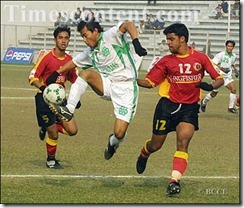 With clubs coming up closer home, players from Northeast don’t need to migrate thousands of kilometers to pursue their dreams, unlike a bunch of youngsters from Manipur whom Bharat Sundaresan met a couple of years ago as they tried to carve out a life for themselves in a quiet corner of Mumbai.
With clubs coming up closer home, players from Northeast don’t need to migrate thousands of kilometers to pursue their dreams, unlike a bunch of youngsters from Manipur whom Bharat Sundaresan met a couple of years ago as they tried to carve out a life for themselves in a quiet corner of Mumbai. 





